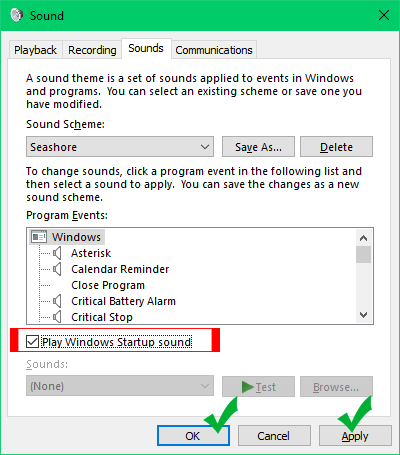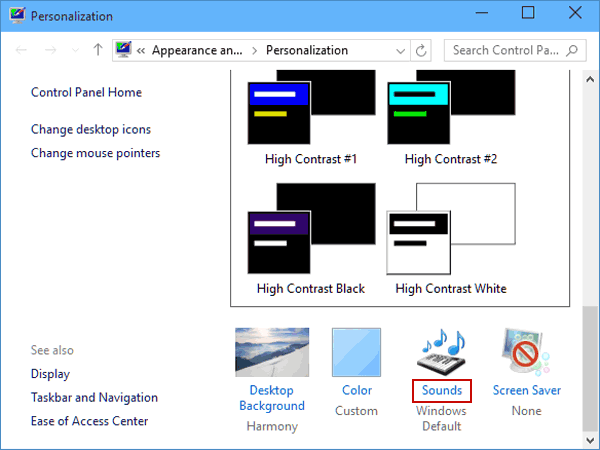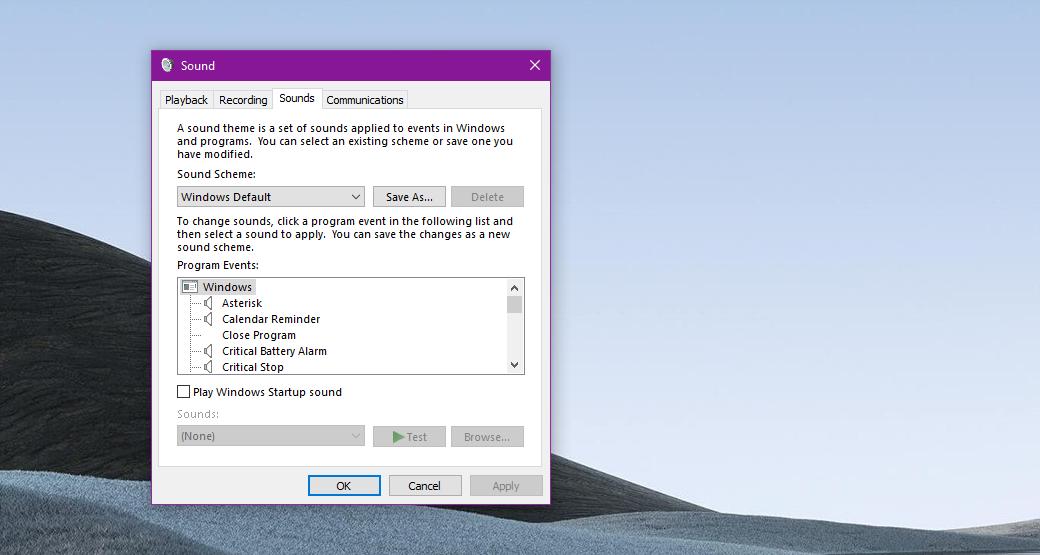
In the EventLabel menu, scroll down to the bottom to find two options. To do that, toggle to HKEY_CURRENT_USER > AppEvents > EventLabels. Now, we’re going to unhide Windows log on and log off option from the event labels menu. Now tap on run as administrator (important). Go to Start and search for Registry Editor. If you are not sure what Windows Registry is, consider it as a huge database of settings for software programs, hardware devices, user preferences, and operating-system configurations, and much more. However, you still get it back with a little bit of Registry tweaking.

Next time your system boots, the app will run at startup.Read 8 Best Offline Dictionary Apps for Windows PC in 2020 Method 1 – Use Registry EditorĮver since Microsoft made changes in the architecture in Windows 8/10, there’s no direct option to change start-up sound in the sound settings. You will see a shortcut in the Startup folder.Right-click on the blank space in the folder.Now go back to Startup folder you have opened before.In the file location folder, right-click on the file and click Copy.Right-click on it, select More and then click Open file location.In the window that opens, type the following: shell:startup and hit enter or click OK.Press the Windows Logo Key and R key at the same time.If that’s something you want to do, follow these steps: There might be an app that you use all the time, so it might be useful to make it run at startup. How to make a specific app run at startup in Windows 10


Go to Task Manager > Startup tab, click on the app of your choice and select Enable. If you change your mind and want to make the app run at startup again, just follow the same steps.


 0 kommentar(er)
0 kommentar(er)
